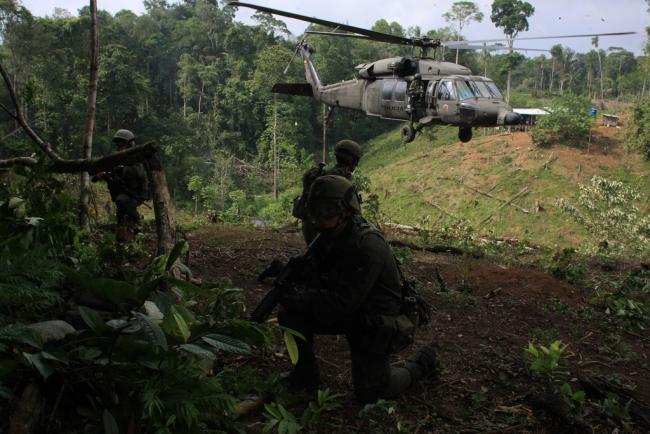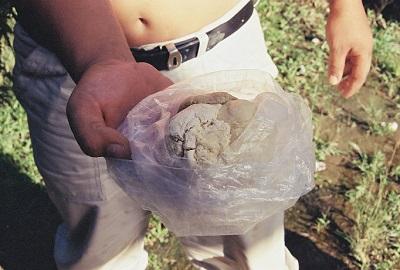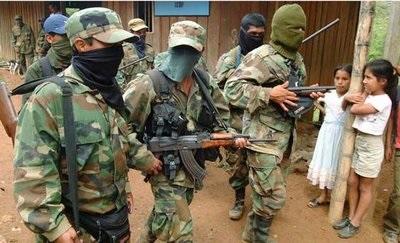
Editor's Note: This article is part one of a series on the ongoing peace process in Colombia.
“Plan Colombia has been a tribute to the people of Colombia and their efforts to overcome so many challenges,” President Obama said in his prepared remarks welcoming Colombian President Juan Manuel Santos to the White House during his February 4 visit. Colombia had reached a “tipping point,” he went on to say, adding that the “tide had turned.”
U.S. policymakers and pundits have been declaring Plan Colombia a success since the mid-2000s, claiming that it created a “Colombian miracle” that brought the country “back from the brink.” In his 2013 Senate confirmation hearing, Secretary of State John Kerry stated: “Colombia is a model for the region. It is an example to the rest of Latin America about what awaits them if we can convince people to make better decisions.” Last January, Vice President Joe Biden suggested that Plan Colombia could be a model for Central America. Colombian police are now instructing Afghan investigators, and Colombian soldiers train military forces around the world, including in Honduras.
Yet U.S.-sponsored counternarcotics efforts funded by Plan Colombia have failed to stem drug trafficking. Impunity for violence has continued over the past two decades. Plan Colombia was never a real plan; it never addressed the roots of the Colombian conflict.
Passed in 2000, the “Emergency Supplemental in Support of Plan Colombia” was going to help Colombia do it all: reduce drug trafficking, defeat leftist guerrillas, support peace, and build democracy. At the time, Colombia was widely described as a country in crisis; it was facing an economic downturn, escalating guerrilla war, and a growing illegal drug trade. When Colombia’s then newly elected president, Andrés Pastrana, visited Washington in October 1998, President Bill Clinton promised to expand the bilateral agenda beyond drugs to include human rights, trade, and peace.
During that and subsequent visits, Pastrana requested support for the nascent peace process with the guerrillas and for assistance for his “Marshall Plan” for rural Colombia. His proposal involved economic and development aid for the small farmers growing coca, in hopes that the international community would respond to the devastation caused by drug production and trafficking just as it had towards ravaged Europe after World War II. Instead, in 1999 Congress tripled assistance for militarized counternarcotics programs, making Colombia the third largest recipient of U.S. military aid after Israel and Egypt. At the same time, the Clinton administration convened the Plan Colombia Interagency Task Force to design an aid package.
The name “The Emergency Supplemental in Support of Plan Colombia” suggested a quick fix for an emergency. However, the package was put together in slow motion, over the course of several years, most often by expanding programs already in place rather than implementing new ones. The program was designed in Washington according to the U.S.’s agenda, delayed for months due to unrelated budget wrangling, and eventually passed not as a stand-alone bill but as part of the emergency supplemental appropriations bill required to fund all of the government’s functioning. In other words, there was no “plan,” only a mishmash of projects intended to marshal the widest possible institutional support within the government.
Depending on who you asked, Plan Colombia was either a domestic counternarcotics policy intended to address the Clinton’s Administration moral crisis, a peace policy to support negotiations with the guerrilla forces, a counterinsurgency policy that would strengthen the security forces, or an economic development initiative intended to to spur development in remote regions.To many, Plan Colombia was supposed to fulfill all these objectives simultaneously.
Despite these declarations of a broad agenda, the clear winner was the Pentagon. More than 80 percent of the assistance was military aid, at a time when the Colombian security forces were linked to abusive, drug-trafficking paramilitary groups. Of the initial $1.2 billion in 2000, $600 million was destined for the “Push into Southern Colombia” and was used to train and equip elite battalions of the Colombian army. Although U.S. officials classified the entire Colombia proposal as counternarcotics aid, many of the military campaigns in southern Colombia, a stronghold of the country’s largest leftist guerrilla group, were identical to counterinsurgency operations. This slight of hand allowed those eager to fight the guerrillas – particularly the U.S. and their Colombian military allies – political cover, avoiding the controversial “slippery slope” of counterinsurgency aid that might end with US troops on the ground. Over the next decade, almost US$10 billion was spent under the umbrella of Plan Colombia.
Drug Bust and Counterinsurgency Crimes
Plan Colombia’s stated counternarcotics objective was the reduction of coca production by 50 percent. By this metric, U.S. assistance has utterly failed. Colombia remains the world leader in coca production, which has moved into new areas of the country even as cocaine remains readily available in the U.S. Hundreds of millions of dollars spent on alternative crop projects – everything from airlifting in chickens to distribute to Colombian farmers to building factories – have melted into the jungle without a trace. For more than two decades, the U.S. sponsored massive aerial spraying with the chemical herbicide glyphosate, in programs managed by military contractor DynCorp. Activists and local health workers reported massive flora and fauna deaths, as well as complaints about rashes and other health problems. Using statistical analysis of cases in local hospitals, they found a dramatic increase in deaths from diarrhea in the region, which they argued was a health consequence of the fumigation and in particular the high concentrations of the chemicals in the water. Yet these claims were dismissed out of hand by US and Colombian government officials, who argued that they lacked the baseline studies to prove any causal links between glyphosate and health problems in the region. In March 2015, however, the World Health Organization announced that their research found that the chemical was a probable carcinogen. As a result, fumigation operations were suspended in September of that year.

The counternarcotics objectives of Plan Colombia are forgotten or dismissed with a wink and a wave by those who today proclaim its success. The real proof of success is the decline in violence, Plan Colombia’s proponents claim, and the counterinsurgency victories of the Colombian military, achieved with U.S. support, some argue, resulted in the current peace process.According to those proclaiming Plan Colombia’s success, this is the real “nation-building” triumph of Plan Colombia. A closer look, however, demonstrates this to be a hollow and pyrrhic victory that has created a nation of victims.
The U.S. military’s primary partners were the unreformed Colombian armed forces. Throughout the 1990s, internal U.S. reporting rebuked the Colombian military as inept, corrupt, and abusive, according to intelligence reports obtained through the work of the National Security Archive. As the U.S. began ramping up military aid, they could not find any Colombian units that met human rights standards. The 1997 Leahy Law required screening to prevent a portion of counternarcotics aid from reaching specific foreign military units facing credible allegations of abuses. Instead of demanding systemic reform, the U.S. simply shifted funding towards new battalions made up of soldiers who did not face individual accusations. These forces would be automatically cleared for assistance and training, allowing them to begin major counterinsurgency offensives regardless.
But the Colombian military wasn’t only getting help from the U.S.; they also relied upon the help of paramilitary squads. The same year Leahy Law passed in the U.S. Congress, paramilitary leaders announced the creation of new national coordinating body, the United Self-Defense Forces of Colombia (AUC), an organization believed to be heavily financed through the drug trade.
Shortly after its formation, the AUC issued a statement announcing an expanded counterinsurgency strategy into new regions of Colombia. Paramilitary gunmen went to guerrilla strongholds, where they targeted presumed guerrilla sympathizers and civilians, pushing them into remote rural areas and breaking their supply networks. Newly created “mobile squads”— elite training and combat units— carried out these operations, which included numerous massacres and assassinations, often targeting the civilian population in these areas. Paramilitary commanders set up bases and occupied small towns, with local military commanders providing close coordination and logistical support for these operations. According to Colombian government statistics, the AUC committed more than 900 massacres between 1997 and 2002.
The Colombian military actively supported this violence. The paramilitaries became known as the “armed branch of the army.” While soldiers were at home in the barracks or occupying small towns after they had been “pacified,” the paramilitaries were fighting the counterinsurgency war, primarily by targeting civilians. Throughout the country, survivors described military forces scouting the region prior to paramilitary attacks and then blocking escape routes. Military officers would threaten villagers, announcing that paramilitaries were on their way, referring to the spectacularly brutal violence such groups employed, including public acts of torture committed with acid, machetes, and chain saws. In some cases, paramilitary and military forces even carried out joint patrols, and military officers and paramilitary commanders were frequently seen drinking and socializing together in small towns throughout the country.

Military officers were also engaged in the practice of killing poor young men and presenting them as guerrillas killed in combat to gain institutional rewards, a scandal known as falsos positivos (false positives). The name refers to the results of the relentless demand by military commanders for "positive" results, that is, high body counts of alleged guerrilla enemies. The U.N. High Commissioner for Human Rights in Colombia estimates that more than 3,000 people may have been victims of extrajudicial executions by state actors. Between 2004 and 2008, the Colombian army committed the majority of such cases.
At the same time, Colombia’s domestic security and intelligence agency, known as DAS, was engaged in widespread illegal surveillance of Supreme Court magistrates, journalists, rights defenders, and government critics. The DAS’s director from 2002-2005 , Jorge Noguera, has been convicted of putting the intelligence agency at the service of paramilitary groups.
From 2003 to 206, the Colombian government held a series of talks with paramilitary leaders. The resulting series of demobilizations brought more than 30,000 troops officially back into civilian life, but were been widely criticized for enshrining impunity. The impact on Colombian democracy is frequently overlooked, however. In what is now known as the parapolítica scandal, investigations of electoral fraud revealed pervasive links between paramilitary forces and politicians, business leaders, and military officers over the past decade. By 2011, more than 120 former members of Congress had come under investigation for paramilitary ties, and more than 40 had been convicted. This process involved approximately one third of Colombia’s mayors, governors, and congressmen as the subjects of ongoing investigations. Testimony by demobilized paramilitaries has implicated 324 members of the armed forces and 5,766 private citizens.
The emergence of reorganized paramilitary forces, which the government calls “emerging criminal bands” (Bacrims), further demonstrates the failure of the demobilization process to diminish paramilitary power. Throughout the country, former mid-level paramilitaries have organized death squad operations to protect their economic projects, particularly the illegal drug trade. While the scale of the violence has clearly diminished, neo-paramilitary groups continue to commit abuses against the civilian population, including murders, massacres, forced disappearance, rape, and forced displacement.
Paz Colombia?
President Santos is currently requesting additional U.S. assistance, what some call a Plan Colombia 2.0, or “Peace Colombia,” to fund infrastructure for peace, including rural development, support for demobilization, and landmine removal programs. The country faces tough economic times, as falling oil prices for Colombia’s leading export have caused the peso to lose 40% of its value and caused the government to implement austerity measures. Last year, the U.S. appointed a special envoy to the peace process, Bernard Aronson, and pledged diplomatic and future financial support for the process. The fact that the FARC remains on the State Department’s list of foreign terrorist organizations also makes it challenging for U.S. involvement to appear objective or credible. What remains to be seen is whether or not the U.S. will be able to break from its history of offering military aid to Colombia, and instead finally begin contributing to a truly peaceful resolution of Colombia’s conflict.
Winifred Tate is an assistant professor of anthropology at Colby College. She is the author of Drugs, Thugs and Diplomats: US Policymaking in Colombia and the award-winning Counting the Dead: The Culture and Politics of Human Rights Activism in Colombia.

